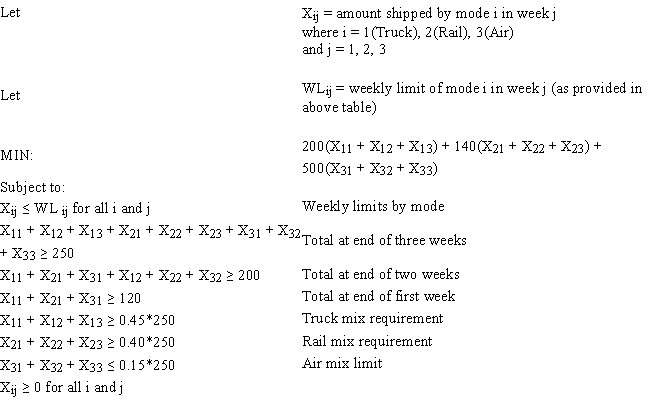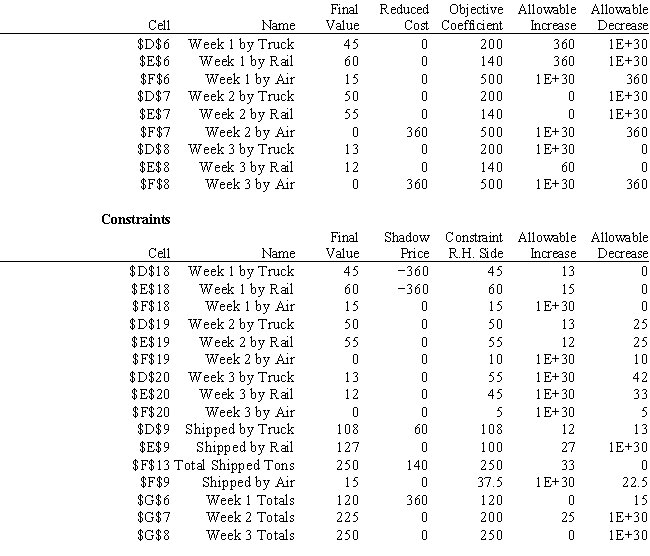Exhibit 4.1
The following questions are based on the problem below and accompanying Analytic Solver Platform sensitivity report.
Carlton construction is supplying building materials for a new mall construction project in Kansas. Their contract calls for a total of 250,000 tons of material to be delivered over a three-week period. Carlton's supply depot has access to three modes of transportation: a trucking fleet, railway delivery, and air cargo transport. Their contract calls for 120,000 tons delivered by the end of week one, 80% of the total delivered by the end of week two, and the entire amount delivered by the end of week three. Contracts in place with the transportation companies call for at least 45% of the total delivered be delivered by trucking, at least 40% of the total delivered be delivered by railway, and up to 15% of the total delivered be delivered by air cargo. Unfortunately, competing demands limit the availability of each mode of transportation each of the three weeks to the following levels (all in thousands of tons):  The following is the LP model for this logistics problem.
The following is the LP model for this logistics problem. 

-Refer to Exhibit 4.1. Of the three percentage of effort constraints, Shipped by Truck, Shipped by Rail, and Shipped by Air, which should be examined for potential cost reduction?
Definitions:
Formula
A mathematical expression or rule expressed in symbols, representing the relationship between variables.
Summation
The process of adding together a sequence of numbers or other quantities to find their total.
Standard Deviation
A measure of the amount of variation or dispersion in a set of values, indicating how spread out the values are.
Greek Letter
Symbols used in mathematics, science, and engineering to denote variables, constants, and special functions.
Q5: Which of the following pair of countries
Q5: The number of companies that follow IASC
Q25: In similar economic environments or situations<br>A) accounting
Q35: Transparency<br>A) is consistent with confidentiality<br>B) is not
Q35: The optimal solution to a NLP problem
Q42: A situation when decision quality is bad
Q42: Decision variables in network flow problems are
Q55: A heuristic solution is<br>A)used by Analytic Solver
Q57: A robust solution to an LP problem<br>A)is
Q83: A company is developing its weekly